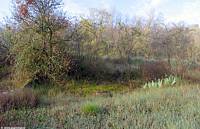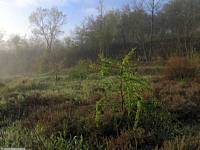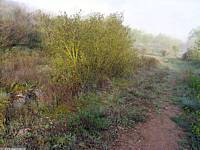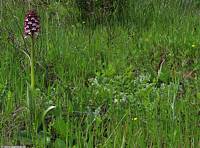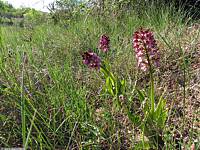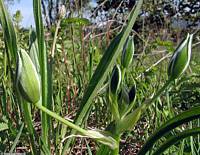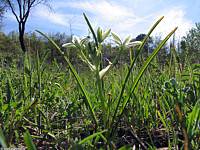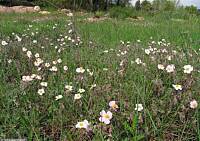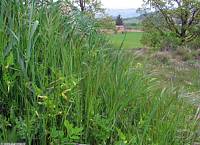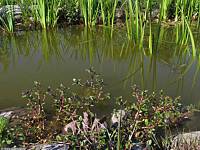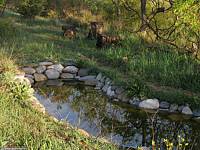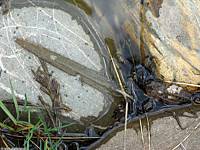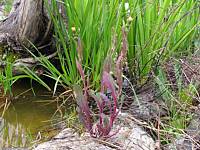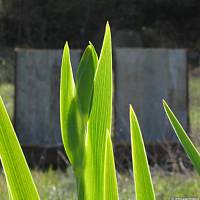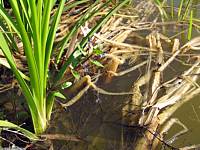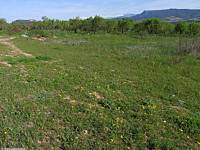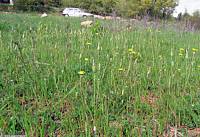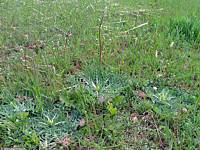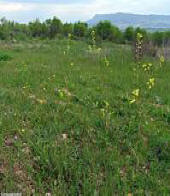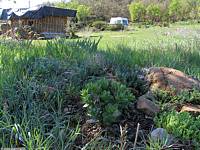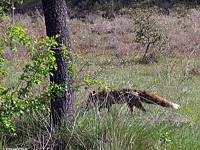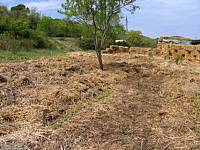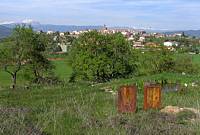|
|
Nature
Switched On
|
|
|
introduction
|
2009 April 23 to 25, Thursday to Saturday Lots of rain and some mist in the early morning create a special atmosphere on the terrain these days.
|
Photograph taken on 19 April 7:58 |
|
19 April 8:01 |
19 April 8:06 | |
|
The abundant flowering of the Lady orchids (Orchis purpurea) is spectacular. I counted more than 60 plants, sprouting all over the terrain but especially on the centre terraces. On an excursion in the nearby surroundings I couldn't find almost any of these orchids, which corroborates my theory that their abundance on the terrain can be explained by the absence of grazing sheep.
|
||
| 3
Orchis purpurea along the centre path. Looking north-west. Friday 17:28 |
A robust specimen of Orchis
purpurea together with another one just emerging. Middle, oriental terrace. Saturday 12:05 |
|
|
In the bulbs area the flowering of the Wild tulips has given way to
the flowers of Ornithogalum umbellatum
(Star-of-Bethlehem, Grass Lily). Of the 10 planted bulbs, 8 have
emerged so far. They are native for Spain
and reproduce by bulbs and seed.
PS. On 2 May 2009 I detected 3 flowering plants of Ornithogallum umbellatum on the path to our terrain. |
||
|
The filaments of the
flowers of Ornithogalum umbellatum are aspiring
to become part of the perianth. Thursday 17:05 |
||
|
Ornithogalum umbellatum sunbathing. |
On the left the same flower on
the next morning. The closure is really neat. Friday 10:02 |
|
|
Three examples more of the many species that started flowering these days: Common Rockrose (Helianthemum violaceum), Yellow Fetch (Vicea lutea) and Brooklime (Veronica beccabunga).
|
||
|
Helianthemum violaceum massively flowering near
the entrance. Looking west. Saturday 10:45 |
||
|
Veronica beccabunga . At the back on the left Iris pseudacorus, on the right Sparganium erectum. Thursday 17:26 |
The yellow Vicea
lutea among the flowering grass Bromus diandrus on
a south-facing slope on the central terrace. Looking north-east. Saturday 12:01 |
|
|
The combination of water, stone and life in the ponds is always
offering interesting
|
||
|
Lower pond. Photograph taken on19 April 8:17 |
Saturday 11:47 |
|
|
Sonchus oleraceus (Sow thistle) starting to flower in the higher pond. Saturday 11:54
Old and new leaves of Sparganium erectum (Bur
reed) |
Iris pseudacorus (Yellow flag) preparing its
flowers. |
|
|
The ground near the caravan, the garden house and the entrance is
suffering quite a lot of trampling and compaction by cars, tractors
and lorries and it is interesting to watch how the vegetation is
reacting.
|
||
|
Taraxacum officinale
near the entrance. Looking north. Friday 9:55 |
||
|
The rosettes of Centaurea calcitrapa suppress effectively possible competitors. The budding stalks are from Scorzonera laciniata. 19 April 19:11 |
Flowering Scorzonera
laciniata near the entrance. Looking west. Saturday 10:41 |
|
|
Overview of this area. |
Erucastrum
nasturtiifolium stresses nicely the third dimension
in the relatively short vegetation. Looking north. Saturday 10:47 |
|
|
This fox (Vulpes vulpes) was a bit absent-minded and didn't notice me at first when I came out of the caravan. He is a regular visitor to the terrain, together with a rabbit and, less frequently, some squirrels.
|
||
|
With a tail almost as thick as
his body, the fox was rummaging quite at ease in clear sunlight. Thursday 16:54 |
||
|
In the foreground, the peas (Dwarf Sweet
Green), sown on 14 March, are doing fine. 2 more rows were
sown on 18 April. |
In the vegetable garden things are going slowly, due to the relatively low temperatures and lots of rain. The more than 20 grapevines that were planted don't show much life and I wonder if they have also suffered the lethal effect of the straw blanket. Fortunately the kiwi plants recovered from the frost blow and are showing a lot of new leaves. |
|
|
I treated
the garden furniture with used motor oil (from the gasoline
generator) to preserve the salvaged wood a little longer.
|
Overview to the north-east, with the oxidized chairs. |
|
|
introduction
|
|
